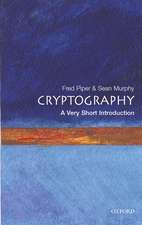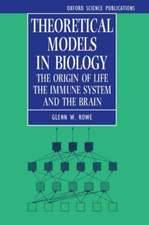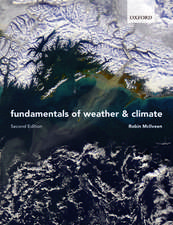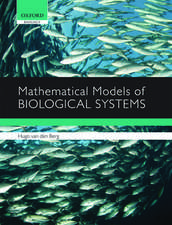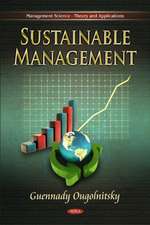The Theory of the Chemostat: Dynamics of Microbial Competition: Cambridge Studies in Mathematical Biology, cartea 13
Autor Hal L. Smith, Paul Waltmanen Limba Engleză Paperback – 25 iun 2008
| Toate formatele și edițiile | Preț | Express |
|---|---|---|
| Paperback (1) | 463.91 lei 6-8 săpt. | |
| Cambridge University Press – 25 iun 2008 | 463.91 lei 6-8 săpt. | |
| Hardback (1) | 791.97 lei 6-8 săpt. | |
| Cambridge University Press – 26 ian 1995 | 791.97 lei 6-8 săpt. |
Preț: 463.91 lei
Preț vechi: 521.25 lei
-11% Nou
Puncte Express: 696
Preț estimativ în valută:
88.77€ • 92.93$ • 73.45£
88.77€ • 92.93$ • 73.45£
Carte tipărită la comandă
Livrare economică 05-19 aprilie
Preluare comenzi: 021 569.72.76
Specificații
ISBN-13: 9780521067348
ISBN-10: 0521067340
Pagini: 332
Ilustrații: 42 b/w illus. 5 tables
Dimensiuni: 152 x 229 x 19 mm
Greutate: 0.49 kg
Editura: Cambridge University Press
Colecția Cambridge University Press
Seria Cambridge Studies in Mathematical Biology
Locul publicării:New York, United States
ISBN-10: 0521067340
Pagini: 332
Ilustrații: 42 b/w illus. 5 tables
Dimensiuni: 152 x 229 x 19 mm
Greutate: 0.49 kg
Editura: Cambridge University Press
Colecția Cambridge University Press
Seria Cambridge Studies in Mathematical Biology
Locul publicării:New York, United States
Cuprins
1. The simple chemostat; 2. The general chemostat; 3. Competition on three trophic levels; 4. The chemostat with an inhibitor; 5. The simple gradostat; 6. The general gradostat; 7. The chemostat with periodic washout rate; 8. Variable yield models; 9. A size-structured competition model; 10. New directions; 11. Open questions; Appendix A. Matrices and their eigenvalues; Appendix B. Differential inequalities; Appendix C. Monotone systems; Appendix D. Persistence; Appendix E. Some techniques in nonlinear analysis; Appendix F. A convergence theorem.
Recenzii
"...a logically ordered and mathematically rigorous explication of the chemostat theory in terms of ODEs...the book can be recommended as a valuable source of reference for students, teachers, and researchers..." D.O. Logofet, Mathematical Reviews
"If you work with microbial systems and contend with dynamic and competition phenomena, this book will serve as a good, concise reference for problemas and approaches that are applicable to many fundamental and applied areas...Getting a copy for yourself or in the library would be worthwhile." Michael Domach, Journal of the American Chemical Society
"I...enthusiastically recommend this monograph to both scientists and mathematicians planning to do research related to chemostat-like models, for whom I think it will be indispensable." Gail S.K. Wolkowicz, Bulletin of Mathematical Biology
"The Theory of Chemostat by Smith and Waltman, two of the leading authorities on the thoery of the chemostat, provides an outstanding introduction to this thoery. Starting from the simplest models of the well-stirred chemostat, they lead the reader from the basic theory, through many of its elaborations, up to the frontiers of current research and many open questions and unsolved problems....This well-written, well-organized book is destined to become a classic in mathematical biology." J.M. Cushing, SIAM Review
"If you work with microbial systems and contend with dynamic and competition phenomena, this book will serve as a good, concise reference for problemas and approaches that are applicable to many fundamental and applied areas...Getting a copy for yourself or in the library would be worthwhile." Michael Domach, Journal of the American Chemical Society
"I...enthusiastically recommend this monograph to both scientists and mathematicians planning to do research related to chemostat-like models, for whom I think it will be indispensable." Gail S.K. Wolkowicz, Bulletin of Mathematical Biology
"The Theory of Chemostat by Smith and Waltman, two of the leading authorities on the thoery of the chemostat, provides an outstanding introduction to this thoery. Starting from the simplest models of the well-stirred chemostat, they lead the reader from the basic theory, through many of its elaborations, up to the frontiers of current research and many open questions and unsolved problems....This well-written, well-organized book is destined to become a classic in mathematical biology." J.M. Cushing, SIAM Review
Descriere
Basic modelling, analysis and simulation of systems that have proven effective in real ecological applications.
















